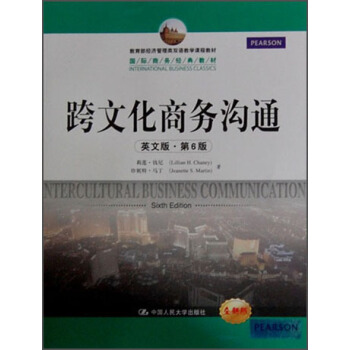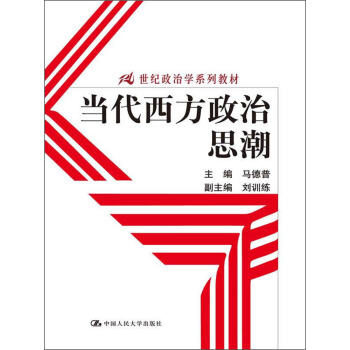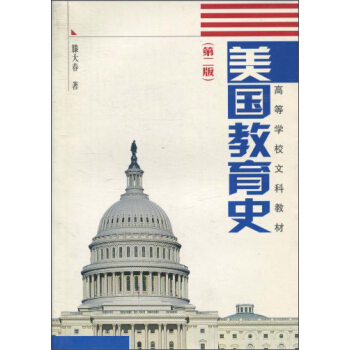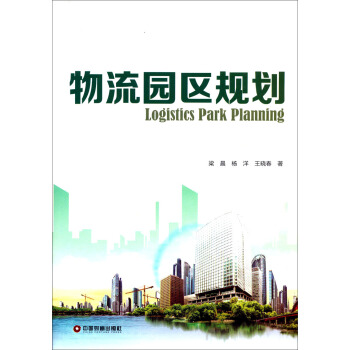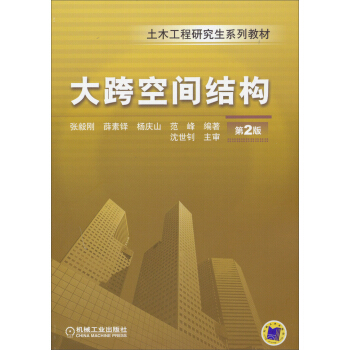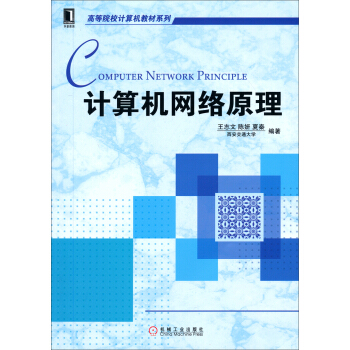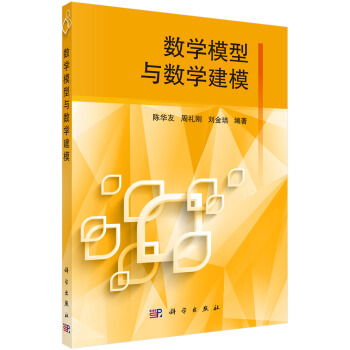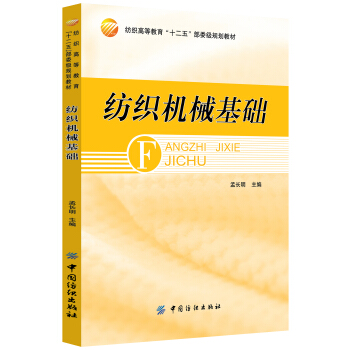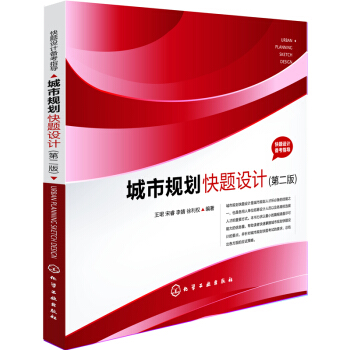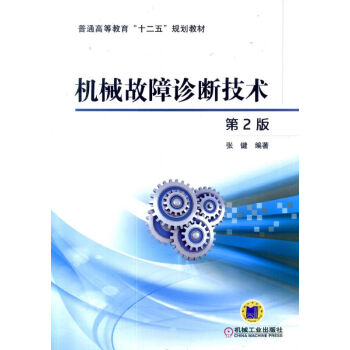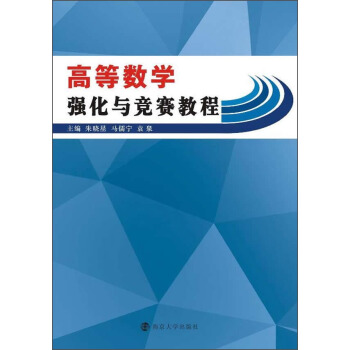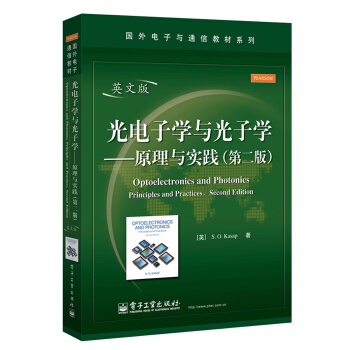

具体描述
编辑推荐
《国外电子与通信教材系列:光电子学与光子学·原理与实践(第2版)(英文版)》是在光电子和光子器件领域的一个最新的适合本科阶段的入门教科书,《国外电子与通信教材系列:光电子学与光子学·原理与实践(第2版)(英文版)》力求采用尽可能少的数学推导而强调通过物理概念来说明原理,提供了许多例题,使得课本概念与实际器件相联系,也提供了大量的练习题。《国外电子与通信教材系列:光电子学与光子学·原理与实践(第2版)(英文版)》有非常清楚的文字和图,明确的解释使得问题很容易理解。与众不同的另一点是它既覆盖了光子学基本面,又具有较深的深度,包含了具体的器件设计和工程应用知识,将光子学和光电子基本理论与各种光子学应用相结合。所以这是一本对本科生、研究生以及光电工程师都非常有用的教科书。
内容简介
《国外电子与通信教材系列:光电子学与光子学·原理与实践(第2版)(英文版)》的主要内容包括光的波动特性,介质波导和光纤,半导体科学基础和LED,光放大器和激光器,光探测器和图像传感器,光的偏振和调制等。每个章节除了基本的题材,还给出一些附加主题适当介绍先进技术和产品化光电子器件实例,扩大和深化读者对基本内容的理解。《国外电子与通信教材系列:光电子学与光子学·原理与实践(第2版)(英文版)》力求采用尽可能少的数学推导而强调通过物理概念来说明原理,提供了许多例题,使得课本概念与实际器件相联系,也提供了大量的练习题。
作者简介
S.O.Kasap,是加拿大萨斯喀彻温大学(University of Saskatchewan)电气工程系教授以及加拿大电子材料与器件首席科学家(Canada Research Chair)。他于1976年、1978年和1983年在伦敦大学帝国理工学院(Imperial College of Science。Technology and Medicine,University of London)分别获得学士、硕士和博士学位。他的研究兴趣涵盖了光电子材料与器件的许多方面,如光子晶体光纤布拉格光栅、光通信、医疗成像、半导体器件的电气噪声特性等。S.O.Kasap已在权威国际期刊发表多篇论文。他还是英国电气工程师学会(IEE)、英国物理学会和英国材料学会的会士。目前,他是Journal of Materials Science的副主编。目录
Chapter 1 Wave Nature of Light1.1 Light Waves in a Homogeneous Medium
1.2 Refractive Index and Dispersion
1.3 Group Velocity and Group Index
1.4 Magnetic Field, Irradiance, and Poynting Vector
1.5 Snell's Law and Total Internal Reflection (TIR)
1.6 Fresnel's Equations
1.7 Antireflection Coatings and Dielectric Mirrors
1.8 Absorption of Light and Complex Refractive Index
1.9 Temporal and Spatial Coherence
1.10 Superposition and Interference of Waves
1.11 Multiple Interference and Optical Resonators
1.12 Diffraction Principles
1.13 Interferometers
1.14 Thin Film Optics: Multiple Reflections in Thin Films
1.15 Multiple Reflections in Plates and Incoherent Waves
1.16 Scattering of Light
1.17 Photonic Crystals
Chapter 2 Dielectric Waveguides and Optical Fibers
2.1 Symmetric Planar Dielectric Slab Waveguide
2.2 Modal and Waveguide Dispersion in Planar
2.3 Step-Index Optical Fiber
2.4 Numerical Aperture
2.5 Dispersion In Single-Mode Fibers
2.6 Dispersion Modified Fibers and Compensation
2.7 Bit Rate, Dispersion, and Electrical and Optical Bandwidth
2.8 The Graded Index (GRIN) Optical Fiber
2.9 Attenuation in Optical Fibers
2.10 Fiber Manufacture
2.11 Wavelength Division Multiplexing: WDM
2.12 Nonlinear Effects in Optical Fibers and DWDM
2.13 Bragg Fibers
2.14 Photonic Crystal Fibers-Holey Fibers
2.15 Fiber Bragg Gratings and Sensors
Chapter 3 Semiconductor Science and Light-Emitting Diodes
3.1 Review of Semiconductor Concepts and Energy Bands
3.2 Semiconductor Statistics
3.3 Extrinsic Semiconductors
3.4 Direct and Indirect Bandgap Semiconductors:
3.5 pn Junction Principles
3.6 pn Junction Reverse Current
3.7 pn Junction Dynamic Resistance and Capacitances
3.8 Recombination Lifetime
3.9 pn Junction Band Diagram
3.10 Heterojunctions
3.11 Light-Emitting Diodes: Principles
3.12 Quantum Well High Intensity LEDs
3.13 LED Materials and Structures
3.14 LED Efficiencies and Luminous Flux
3.15 Basic LED Characteristics
3.16 LEDs for Optical Fiber Communications
3.17 Phosphors and White LEDs
3.18 LED Electronics
Chapter 4 Stimulated Emission Devices: Optical Amplifiers and Lasers
4.1 Stimulated Emission, Photon Amplification, and Lasers
4.2 Stimulated Emission Rate and Emission Cross-Section
4.3 Erbium-Doped Fiber Amplifiers
4.4 Gas Lasers: The He-Ne Laser
4.5 The Output Spectrum of a Gas Laser
4.6 Laser Oscillations: Threshold Gain Coefficient
4.7 Broadening of the Optical Gain Curve and Linewidth
4.8 Pulsed Lasers: Q-Switching and Mode Locking
4.9 Principle of the Laser Diode
4.10 Heterostructure Laser Diodes
4.11 Quantum Well Devices
4.12 Elementary Laser Diode Characteristics
4.13 Steady State Semiconductor Rate Equations:
4.14 Single Frequency Semiconductor Lasers
4.15 Vertical Cavity Surface Emitting Lasers
4.16 Semiconductor Optical Amplifiers
4.17 Superluminescent and Resonant Cavity Leds:
4.18 Direct Modulation of Laser Diodes
4.19 Holography
Chapter 5 Photodetectors and Image Sensors
5.1 Principle of the pn Junction Photodiode
5.2 Shockley-Ramo Theorem and External Photocurrent
5.3 Absorption Coefficient and Photodetector Materials
5.4 Quantum Efficiency and Responsivity
5.5 The pin Photodiode
5.6 Avalanche Photodiode
5.7 Heterojunction Photodiodes
5.8 Schottky Junction Photodetector
5.9 Phototransistors
5.10 Photoconductive Detectors and Photoconductive
5.11 Basic Photodiode Circuits
5.12 Noise in Photodetectors
5.13 Image Sensors
5.14 Photovoltaic Devices: Solar Cells
Chapter 6 Polarization and Modulation of Light
6.1 Polarization
6.2 Light Propagation in an Anisotropic Medium:
6.3 Birefringent Optical Devices
6.4 Optical Activity and Circular Birefringence
6.5 Liquid Crystal Displays
6.6 Electro-Optic Effects
6.7 Integrated Optical Modulators
6.8 Acousto-Optic Modulator
6.9 Faraday Rotation and Optical Isolators
6.10 Nonlinear Optics and Second Harmonic Generation
6.11 Jones Vectors
……
前言/序言
PrefaceThe first edition of this book was written more than 12 years ago. At the time it was meant as an easy-to-read book for third-year engineering or applied physics undergraduate students;it emphasized qualitative explanations and relied heavily on intuitive derivations. As things turned out, the first edition ended up being used in fourth-year elective classes, and even in graduate courses on optoelectronics. Many of the instructors teaching at that level rightly needed better derivations, more rigor, better explanations, and, of course, many more topics and problems. We have all at one time or another suffered from how wrong some intuitive short-cut derivations can be. The second edition was therefore prepared by essentially rewriting the text almost from scratch with much better rigor and explanations, but without necessarily dwelling on mathematical details. Many new exciting practical examples have been introduced, and numerous new problems have been added. The book also had to be totally modernized given that much had happened in the intervening 12 years that deserved being covered in an undergraduate course.
Features, Changes, and Revisions in the Second Edition
The second edition represents a total revision of the first edition, with numerous additional features and enhancements.
All chapters have been totally revised and extended.
Numerous modern topics in photonics have been added to all the chapters.
There are Additional Topics that can be covered in more advanced courses, or in courses that run over two semesters.
There are many more new examples and solved prblems within chapters, and many more practical end-of-chapter problems that start from basic concepts and build up onto advanced applications.
Nearly all the illustrations and artwork in the first edition have been revised and redrawn to better reflect the concepts.
Numerous new illustrations have been added to convey the concepts as clearly as possible.
Photographs have been added, where appropriate, to enhance the readability of the book and to illustrate typical modern photonic/optoelectronic devices.
The previous edition’s Chapter 7 on photovoltaics has been incorporated into this edition’s Chapter 5 as an Additional Topic, thus allowing more photonics-related topics to be covered.
Advanced or complicated mathematical derivations are avoided and, instead, the emphasis is placed on concepts and engineering applications.
Useful and essential equations in photonics are given with explanations and are used in examples and problems to give the student a sense of what typical values are.
Cross referencing in the second edition has been avoided as much as possible, without too much repetition, to allow various sections and chapters to be skipped as desired by the reader.
There is greater emphasis on practical or engineering examples; care has been taken to consider various photonics/optoelectronics courses at the undergraduate level across major universities.
The second edition is supported by an extensive PowerPoint presentation for instructors who have adopted the book for their course. The PowerPoint slides have all the illustrations in color, and include additional color photos. The basic concepts and equations are also highlighted in additional slides. There are also numerous slides with examples and solved problems. Instructors should visit www.pearsoninternationaleditions.com/kasap to access the PowerPoints.
The second edition is also supported by an extensive Solutions Manual for instructors only. This is available from the publisher at www.pearsoninternationaleditions/kasap.
The second edition continues to represent a first course in optoelectronic materials and devices suitable for a half- or one-semester course at the undergraduate level either at the thirdor fourth-year level in electrical engineering, engineering physics, and materials science and engineering departments. With its additional topics, it can also be used as an introductory textbook at the graduate level. Normally the students would not have covered Maxwell’s equations. Although Maxwell’s equations are mentioned in the text to alert the student, they are not used in developing the principles. It is assumed that the students would have taken a basic first- or second-year physics course, with modern physics, and would have seen rudimentary concepts in geometrical optics, interference, and diffraction, but not Fresnel’s equations and concepts such as group velocity and group index. Typically an optoelectronics course would be given either after a semiconductor devices course or concurrently with it. Students would have been exposed to elementary quantum mechanics concepts, perhaps in conjunction with a basic semiconductor science course.
Most topics are initially introduced through qualitative explanations to allow the concept to be grasped first before any mathematical development. The mathematical level is assumed to include vectors, complex numbers, and partial differentiation but excludes reliance on Fourier transforms. On the one hand, we are required to cover as much as possible and, on the other hand, professional engineering accreditation requires students to solve numerical problems and carry out “design calculations.” In preparing the text, I tried to satisfy engineering degree accreditation requirements in as much breadth as possible. Obviously one cannot solve numerical problems, carry out design calculations, and at the same time derive each equation without expanding the size of the text to an intolerable level. I have missed many topics but I have also covered many, though, undoubtedly, it is my own very biased selection.
I would like to thank two very special colleagues, whom I have known for a very long time, for their comments and help: Harry Ruda (University of Toronto) and Raman Kashyap (école Polytechnique de Montréal)—two perfect gentlemen who read some of the manuscript and made valuable criticisms toward this final version. write to me with your comments. Although I may not be able to reply to each individual comment and suggestion, I do read all my email messages and take good note of suggestions and comments. Many instructors did, in fact, write to me on the first edition, pointed out how things could have been done better, and various mistakes one never seems to be able to eliminate totally. I hope that the second edition will at least go far in satisfying some of their criticisms. There is an important old adage that goes something like this (somewhat paraphrased), “a good diagram is worth a thousand words, but a bad diagram takes a thousand words to explain.” I used a software package called Canvas to draw nearly all the line-art in the second edition as clearly as possible, and errors are all mea culpa; feel free to email me the errors you notice in the figures. All third-party artwork and photographs have been used with permission; and I’m grateful to Pearson Education for meticulously obtaining permission from copyright holders. If you like the second edition, and cannot wait for the third, you can always write your comments and recommendations directly to the Sponsoring Editor for Electrical Engineering, Pearson Higher Education, One Lake Street, Upper Saddle River, NJ 07458, USA. This is the best way to have your input heard.
Resources for Instructors
Instructor’s Solutions Manual. An instructor’s solutions manual was prepared by the author.
Presentation Resources. All art from the text is available in PowerPoint slide and JPEG format.
These files are available for download from the instructor Resource Center at
Kasap. If you are in need of a login and password for this site, please contact your local Pearson Prentice-Hall representative.
用户评价
我一直认为,物理世界的奥秘往往隐藏在能量的转换和信息的传递过程中。光电子学和光子学正是研究这一过程的学科,而这本《国外电子与通信教材系列:光电子学与光子学·原理与实践(第2版)(英文版)》的书名,精准地概括了我对此类学科的关注点——“原理与实践”。我希望书中能够深入浅出地讲解光子与电子在半导体材料中的相互作用机制。例如,我非常期待书中能够详细介绍半导体材料的能带理论,以及空穴和电子如何在这其中扮演角色,从而实现光的产生和吸收。对于光电器件,我希望能看到对各类器件的深入分析,包括LED的发光原理、激光器的阈值条件和工作模式、光电探测器的响应机制和性能限制。我尤其关注书中对于不同材料体系(如硅、化合物半导体、有机半导体、量子点等)在光电器件中的应用特点和性能差异的比较。此外,我也希望书中能够探讨光信号的调制和解调技术,这对于信息传输至关重要。比如,如何利用电场、磁场或声场来改变光的特性,从而编码信息。我期望书中能够提供一些关于现代光电技术的实例,例如在光通信、光计算、光存储、生物医学成像等领域的应用,从而让我能够理解理论知识是如何转化为实际技术的。
评分我目前正在攻读光学工程方向的博士学位,而光电子学和光子学是我的研究核心。一本高质量的英文原版教材,对我而言,是学术视野拓展和研究能力提升的宝贵资源。这本书,《国外电子与通信教材系列:光电子学与光子学·原理与实践(第2版)(英文版)》,我对其的期待值非常高。我希望它能在现有学术基础上,提供更深入、更前沿的理论探讨。例如,我非常希望书中能够详细阐述量子光学和量子信息科学中的基本概念,如量子态、量子纠缠、光子数态、相干态等,并探讨它们在光电转换和光子器件设计中的应用。对于半导体光电器件,我期待看到对新型半导体材料(如III-V族化合物半导体、II-VI族化合物半导体、碳纳米管、石墨烯等)在光电器件中的应用潜力进行深入分析,包括其能带工程、载流子动力学以及在特定功能器件(如高效LED、低阈值激光器、快速响应探测器)中的优化设计。我尤其关注书中关于光子集成和硅光子技术的内容,希望能详细了解如何将多种光学元件集成到单一芯片上,以及其在高速通信、生物传感、量子计算等领域的应用前景。此外,作为第二版,我期望书中能够包含最新的研究进展,例如超材料在光操控方面的应用、拓扑光子学、新型光存储技术、以及人工智能在光电器件设计和优化中的作用。我希望这本书能够为我的博士研究提供扎实的理论支撑和创新的研究思路。
评分我个人是一名对光通信网络架构和技术发展充满好奇的学习者,尤其关注信号传输的底层技术。这本《国外电子与通信教材系列:光电子学与光子学·原理与实践(第2版)(英文版)》的书名,直接击中了我关注的焦点。我希望它能为我深入理解光通信系统中信号的产生、传输、接收以及处理的原理提供坚实的基础。在信号产生方面,我期望书中能详细介绍各种光信号源,如不同类型的激光器(DFB、FP、VCSEL)和LED,并对其发射光谱、调制特性、功率稳定性等进行深入分析。在信号传输方面,我非常期待关于光纤传输的理论讲解,包括光纤的结构、工作原理(全内反射)、模式传播、色散(材料色散、波导色散、模式色散)、非线性效应(如克尔效应、拉曼散射)以及如何降低损耗和提高传输带宽。在信号接收方面,我希望能详细了解各类光电探测器,如PIN二极管、雪崩光电二极管(APD),以及它们在光信号解调中的作用,包括响应速度、量子效率、噪声分析等。此外,我对于光放大器(如EDFA、SOA)的工作原理以及在长距离传输中的应用也很感兴趣。作为第二版,我期望这本书能涵盖一些最新的发展,例如相干光通信技术中的调制格式和解调技术,以及未来的超大带宽光传输系统所面临的挑战。总而言之,我希望这本书能够为我构建一个关于光通信系统信号流动的完整图景,并深入理解其背后的光子学原理。
评分这本《国外电子与通信教材系列:光电子学与光子学·原理与实践(第2版)(英文版)》的出现,对我这个在光电子领域摸索了几年,始终觉得理论根基不够扎实的研究僧来说,简直是雪中送炭。一直以来,市面上虽然不乏关于光电子学和光子学的书籍,但要么过于偏重理论推导,晦涩难懂,让初学者望而却步;要么过于侧重应用,细节之处含糊不清,难以深入。这本书恰恰找到了一个完美的平衡点。从我拿到书的第一个晚上就开始翻阅,那厚实的质感,精良的印刷,再到扉页的英文原著,都透着一股严谨和专业。我最看重的是它“原理与实践”的标题,这预示着它不会仅仅停留在概念层面,而是会深入到实际的器件工作机制,甚至会涉及一些工程上的考量。我个人尤其希望看到关于半导体激光器、LED、光电探测器等核心器件的深入剖析,包括它们的能带结构、载流子动力学、光谱特性、效率优化等,而不仅仅是公式的堆砌。同时,我也期待书中能够提供一些真实的实验数据或者仿真结果作为佐证,这样更能帮助我们理解理论是如何映射到实际应用的。我一直觉得,光学和电子学的交叉领域,很多时候需要直观的理解,而不仅仅是冰冷的数学公式,所以我很期待这本书能在这方面有所建树,通过图示、模型等方式,将抽象的物理概念生动地展现出来。另外,作为第二版,我期望它能包含一些最新的研究进展,比如新型光子材料、量子点光电子器件、或者光通信领域的一些前沿技术,这样才能保证知识的时效性。总之,我怀揣着极大的热情,希望这本书能够填补我在理论知识上的空白,为我日后的研究提供坚实的基础和灵感的启发。
评分我一直对精密仪器和测量技术抱有浓厚的兴趣,而光电子学和光子学在其中扮演着举足轻重的角色。这本书,《国外电子与通信教材系列:光电子学与光子学·原理与实践(第2版)(英文版)》,正是瞄准了我这一兴趣点。我非常期待书中能够深入探讨光电检测技术在各类测量仪器中的应用。例如,我希望看到关于光电传感器原理的详细讲解,包括不同类型的传感器(如光电二极管、光电三极管、CCD/CMOS图像传感器)的工作机制、灵敏度、响应速度、动态范围等关键参数。我希望了解这些传感器是如何被集成到各种精密测量设备中的,比如光谱仪、激光测距仪、条形码扫描仪、以及工业自动化中的视觉检测系统。我特别关注书中是否会涉及一些高级的光电检测技术,例如时间分辨测量、干涉测量、多普勒测量等,以及这些技术在生物医学成像、材料表征、环境监测等领域的应用。同时,我也希望看到书中能够提供一些关于光源选择和光路设计的指导,因为这对于构建高效可靠的光电测量系统至关重要。比如,如何根据被测对象的特性选择合适的光源(激光、LED、卤素灯等),以及如何设计合理的光学元件(透镜、反射镜、滤光片等)来聚焦、准直、分光或调制光线。如果书中还能包含一些实际的测量案例分析,介绍如何利用光电原理解决特定的工程难题,那将是对我极大的启发。
评分对于我这样一个在通信行业摸爬滚打多年的工程师来说,理论更新的速度有时候真的跟不上技术的迭代。尤其是光通信,这几年发展迅猛,各种新技术层出不穷,从早期的光纤到现在的相干光通信,再到未来的自由空间光通信,光子学原理在其中扮演着至关重要的角色。当我看到这本《国外电子与通信教材系列:光电子学与光子学·原理与实践(第2版)(英文版)》的时候,我 immediately feel it might be a great resource. 我比较关心的是它对于光纤通信系统中的关键光器件,比如各种类型的激光器(DFB、VCSEL)、调制器(Mach-Zehnder、Electro-absorption)、探测器(PIN、APD)的原理、性能指标以及实际应用场景的阐述。我希望书中能够详细介绍这些器件的设计考量,例如如何提高调制速率、降低噪声、减小功耗,以及它们在不同通信速率下的选择和优化。此外,光放大器(EDFA、SOA)也是光通信系统中不可或缺的部分,我希望书中能对其工作原理、增益特性、噪声分析有深入的讲解。我更期待的是,书中能够探讨一些更具前瞻性的内容,例如硅光子技术的发展、光子集成芯片的挑战与机遇,以及在下一代通信网络中光子学可能扮演的角色。如果书中还能提供一些实际工程案例分析,例如某个高速光通信系统的设计思路、器件选型过程、以及可能遇到的问题和解决方案,那将是对我工作极大的帮助。总而言之,我希望这本书不仅能巩固我现有的知识,更能为我打开新的视野,了解光电子学和光子学在通信领域的前沿动态和未来发展趋势。
评分我一直认为,理解一个学科的精髓,离不开对基础概念的深刻把握。这本《国外电子与通信教材系列:光电子学与光子学·原理与实践(第2版)(英文版)》的书名,‘原理与实践’,正是点出了我最看重的部分。我特别希望书中能够清晰地梳理光电子学和光子学的基本概念,例如光的波粒二象性、电磁波的传播、光与物质的相互作用(吸收、发射、散射)、光子的概念及其统计性质等。我期望这些概念的引入能够循序渐进,从最基础的光学原理开始,逐步深入到量子力学的范畴,但又不会过于抽象,能够辅以直观的图示和类比,帮助我们更好地理解。在器件层面,我希望能够详细了解半导体光电器件的物理基础,比如PN结的形成、载流子注入与复合、能量传输机制等。对于光子的产生和探测,我希望看到关于发光二极管(LED)、半导体激光器(LASER)以及各种光电探测器(Photodetector)的详细介绍,包括它们的能带结构、工作原理、性能参数(如效率、响应速度、噪声等)以及影响因素。此外,我也对光子在介质中的传输和调控很感兴趣,例如光纤的传输原理、光波导的构成、以及如何利用光折变、电光效应等实现光的调制和开关。我希望这本书能够提供一个全面而深入的知识框架,让我们能够理解光子学的宏观现象背后的微观机理,从而为进一步的学习和研究打下坚实的基础。
评分我是一名对微纳光学和光子器件充满好奇的本科生,正准备进入下一阶段的学习。对于这本《国外电子与通信教材系列:光电子学与光子学·原理与实践(第2版)(英文版)》,我抱着极大的学习热情,希望能为我打开光电子学和光子学的大门。我非常希望书中能够以清晰易懂的方式介绍微纳光学领域的基础概念,比如光的衍射、干涉、衍射光学元件(如光栅、全息图)的工作原理,以及它们在光学成像和信息处理中的应用。我期待书中能够详细讲解光子晶体和超材料的结构、光学特性以及调控光传播的能力,并探讨它们在新型光电器件设计中的潜力。在光子器件方面,我希望能深入了解微型化和集成化的光学器件,如微透镜阵列、光子晶体光纤、表面等离激元器件等。我期待书中能够解释这些器件的工作原理,以及它们如何实现对光的精密操控,例如光的局域化、引导、过滤或增强。我特别希望书中能结合实例,展示这些微纳光电器件在生物传感、激光技术、光学通信、信息显示等领域的应用。同时,我作为初学者,也希望书中能够提供一些基础的数学工具和物理模型,帮助我理解复杂的概念。希望这本书能够帮助我建立起对微纳尺度下光与物质相互作用的直观认识,并激发我对这个前沿领域的探索兴趣。
评分我作为一名在光学工程领域工作的早期职业研究者,对光电子学和光子学有很强的学习需求。一本好的教材,对我而言,不仅仅是知识的传递,更是能力的培养。这本书,《国外电子与通信教材系列:光电子学与光子学·原理与实践(第2版)(英文版)》,我对其寄予厚望,希望能成为我学术道路上的重要助力。《原理与实践》这几个字,让我看到了它兼顾理论深度和应用广度的潜力。我尤其关注书中对于光学和电子学两大基础学科的结合点,如何用半导体物理和量子力学来解释光电器件的工作原理。例如,我希望看到关于半导体激光器和LED的能带图解,以及载流子在其中如何跃迁发光的过程。对于光电探测器,我期待看到不同类型探测器的结构、响应机制,以及如何优化其灵敏度和响应速度。此外,光在光纤中的传播,特别是全内反射的原理,以及如何设计低损耗、高带宽的光纤,也是我非常感兴趣的内容。我希望书中能提供一些实际的器件模型和仿真分析,让我能够将理论知识应用于实践,了解设计参数对器件性能的影响。同时,作为第二版,我期望它能涵盖一些近年来出现的重要发展,例如硅光子技术在集成电路中的应用,新型光电材料(如钙钛矿)在光电器件中的潜力,以及与量子信息科学交叉的一些概念。我希望这本书能够在我建立扎实的理论基础的同时,也能够激发我的创新思维,为我未来的研究方向提供指引。
评分作为一名对未来能源技术感兴趣的学生,我深知光电子学和光子学在太阳能电池、光电器件等领域的核心作用。这本书,《国外电子与通信教材系列:光电子学与光子学·原理与实践(第2版)(英文版)》,对我而言,将是探索这一领域的绝佳起点。我特别希望书中能够详细阐述太阳能电池的工作原理,包括光生伏打效应、载流子分离和收集机制,以及不同类型太阳能电池(如硅太阳能电池、薄膜太阳能电池、有机太阳能电池、钙钛矿太阳能电池)的结构、材料特性和能量转换效率。我期待书中能够深入分析影响太阳能电池性能的关键因素,如吸收光谱、载流子复合、内阻、以及如何通过材料设计和器件结构优化来提高其效率和稳定性。此外,我也对光电器件在光电能量存储方面的应用很感兴趣,例如光充电电池或光触发化学反应等。我希望书中能提供一些关于光电能量转换与储存一体化系统的理论基础和技术展望。作为第二版,我期望书中能够包含一些最新的研究进展,比如新型高效光伏材料的开发、量子点太阳能电池的最新成果、以及与能源相关的光子学应用。总而言之,我希望这本书能够为我提供一个全面而深入的视角,理解光电子学和光子学在可持续能源发展中的关键作用。
评分专业书籍,很专业,很好,信京东。
评分非常的好非常的好非常的好
评分配送快,很实用
评分挺好的,书还是看纸板的有感觉
评分挺好的,书还是看纸板的有感觉
评分很好,经典教材,价格很亲民
评分挺好的,书还是看纸板的有感觉
评分原版英文教材,很好的学习材料!
评分.....................................
相关图书
本站所有内容均为互联网搜索引擎提供的公开搜索信息,本站不存储任何数据与内容,任何内容与数据均与本站无关,如有需要请联系相关搜索引擎包括但不限于百度,google,bing,sogou 等
© 2026 book.tinynews.org All Rights Reserved. 静思书屋 版权所有

![原汁原味的美国口语教材:爱在纽约(第5册)(附光盘) [Love in NewYork(5)] pdf epub mobi 电子书 下载](https://pic.tinynews.org/11263441/rBEhVFHk9_YIAAAAAARDSwU-OU8AABIrAII4h4ABENj600.jpg)
![高等院校工业工程专业系列规划教材:工业工程专业英语(第3版) [Professional English for Industrial Engineering] pdf epub mobi 电子书 下载](https://pic.tinynews.org/11265991/rBEhWFHWP_MIAAAAAAPQJ1FsKpsAAAy6QJsYN0AA9A_718.jpg)
